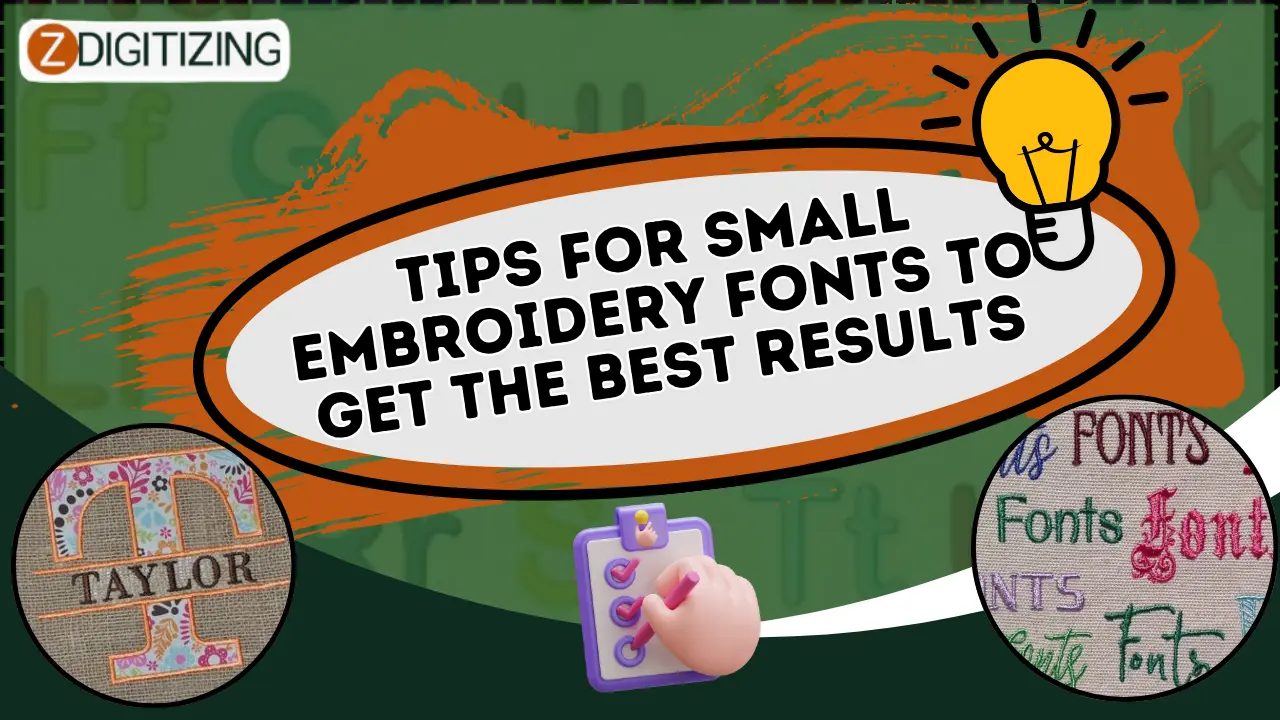Embroidery, especially when dealing with small fonts, requires finesse and attention to detail. Whether you’re a seasoned embroiderer or just starting, mastering the art of small embroidery fonts can elevate your projects to new heights. In this article, we’ll explore essential tips and techniques to ensure the best results in your embroidery endeavors.
Introduction
Embroidery is a craft that beautifully blends artistry with precision. Small embroidery fonts, though challenging, can add a touch of sophistication to your projects. The intricacy of small fonts demands careful consideration and application of various techniques to achieve optimal results.
Choosing the Right Font
Selecting the appropriate font sets the foundation for a successful embroidery project. Factors such as font style, thickness, and complexity play a crucial role. Opt for fonts specifically designed for embroidery to ensure clarity and readability.
Adjusting Letter Spacing
The spacing between letters is pivotal in small font embroidery. Inadequate spacing can lead to letters merging or appearing illegible. Experiment with different spacing techniques to find the right balance for your chosen font.
Selecting Suitable Thread
Thread selection significantly impacts the visibility of free embroidery fonts. Choose high-quality threads in colors that complement your design. Thicker threads may enhance visibility, but ensure they suit the intricacies of small fonts.
Proper Hooping Techniques
Stability is key when working with small fonts. Proper hooping prevents fabric slippage and ensures accurate stitching. Take the time to position and secure your fabric meticulously for optimal results.
Using the Right Needle
The right needle can make or break your small font embroidery. Choose a needle size suitable for the font’s intricacy, preventing issues like thread breaks and distortion. Regularly replace needles to maintain peak performance.
Software Settings for Small Fonts
Embroidery software offers a range of settings that can be adjusted to optimize small fonts. Experiment with letter density, stitch length, and underlay options to achieve the best results. Ensure your chosen settings are compatible with your embroidery machine.
Testing and Sampling
Before diving into your main project, conduct test runs and samples. This step allows you to identify potential issues and make necessary adjustments. Analyze the results and fine-tune settings accordingly.
Maintaining Machine and Tools
Regular maintenance of your embroidery machine and tools is crucial for consistent performance. Clean the machine, oil moving parts, and check tension regularly to avoid glitches that may affect small font embroidery.
Incorporating Backing Materials
Backing materials provide additional support to your fabric, enhancing stability and preventing distortion. Choose the right backing material based on your fabric type and embroidery design to ensure a professional finish.
Understanding Fabric Types
Different fabrics react differently to embroidery. Understand the characteristics of your chosen fabric and adjust your techniques accordingly. Experiment with stitch density and tension to accommodate various fabric types.
Precision in Design Placement
Accurate placement of small fonts is essential for a polished look. Use marking tools to center and align your design before starting the embroidery process. Taking time with placement ensures a professional and aesthetically pleasing result.
Exploring Monogramming Techniques
Monogramming adds a personal touch to small fonts. Experiment with different monogram styles and techniques to create unique and customized projects. Monograms can elevate the sophistication of your embroidery work.
Troubleshooting Common Issues
Small font embroidery comes with its set of challenges. Address common issues like thread tension problems and misalignment promptly. Troubleshooting ensures a smooth embroidery process and prevents project setbacks.
Showcasing Successful Projects
To inspire and motivate, showcase examples of successfully executed small font embroidery projects. Highlight the creativity and precision achieved, providing readers with ideas for their own endeavors.
Conclusion
Mastering small embroidery fonts requires a combination of artistry, technique, and attention to detail. By following these tips and techniques, you can navigate the challenges of small font embroidery and create stunning, professional-looking projects. Experiment, practice, and enjoy the process of enhancing your embroidery skills.
Zdigitizing
ZDigitizing is offering a wide range of digitizing solutions to meet the needs of embroidery businesses and individuals alike. With expertise in logo digitizing, 3D puff digitizing, cap digitizing, and applique digitizing, zdigitizing ensures high-quality and precise embroidery designs.
Their team of skilled embroidery digitizer is well-versed in converting images to embroidery digitizing, making it easy to transform your logos, artwork, or designs into stitch files. Whether you have a PNG or JPG image, ZDigitizing can seamlessly convert it into embroidery-ready files, ensuring accurate reproduction of intricate details and vibrant colors.
Good News: If you are looking for digitizing services for image to embroidery converter online, Then ZDigitizing is best choice for you. Zdigitizing is a professional company that provides complete digitizing and vector art services worldwide.
FAQs
- Can I use any font for small embroidery projects?
- While you can experiment with different fonts, it’s advisable to choose fonts specifically designed for embroidery to ensure optimal results.
- What is the importance of letter spacing in small font embroidery?
- Adequate letter spacing is crucial to prevent letters from merging or appearing illegible, ensuring clarity and readability.
- How often should I replace the embroidery needle?
- Regularly replace the needle to prevent issues like thread breaks and distortion. Replace the needle after every few projects or when you notice a decline in performance.
- Do I need special software for small font embroidery?
- While not mandatory, embroidery software with adjustable settings can greatly enhance the outcome of small font embroidery projects.
- Can I embroider small fonts on any fabric?
- Different fabrics react differently to embroidery. Experiment with stitch density and tension to accommodate various fabric types for the best results.

